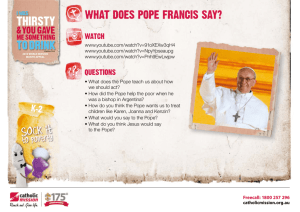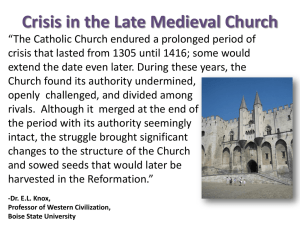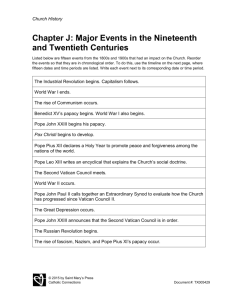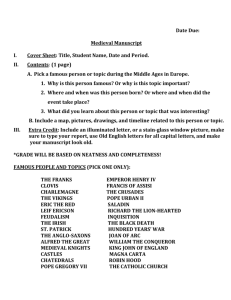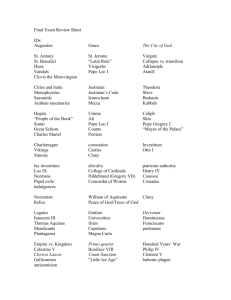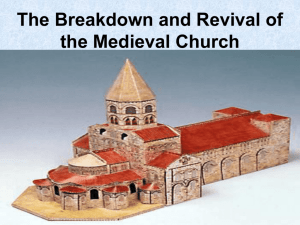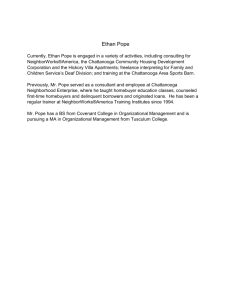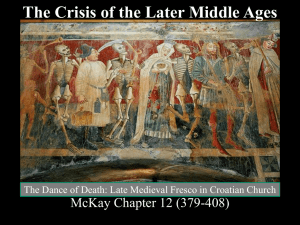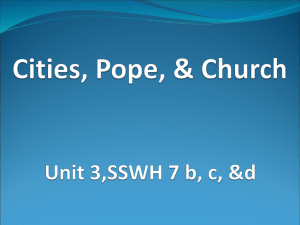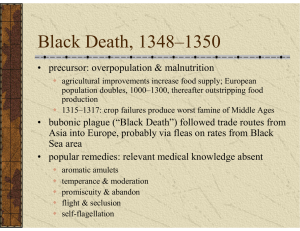Ch.9: Late Middle Ages Social and Political Background
advertisement
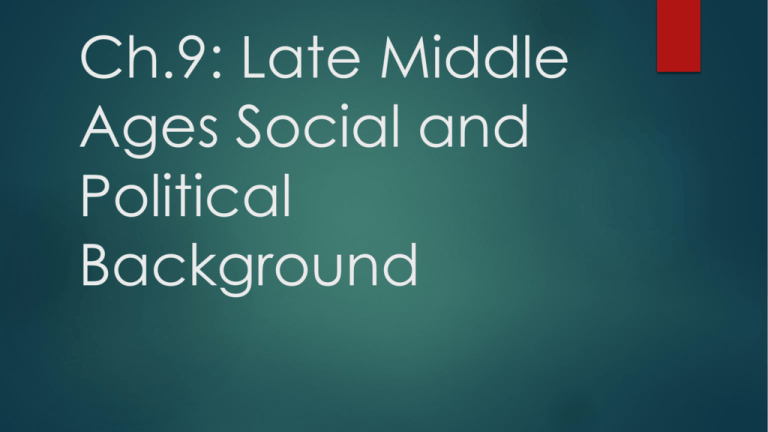
Ch.9: Late Middle Ages Social and Political Background Video to set stage Dark Ages http://watchdocumentary.org/watch/crash-course-world-historyepisode-14-the-dark-ages-how-dark-were-they-reallyvideo_53c44f007.html The Black Death Known as the Bubonic Plague Results of Overpopulation Economic depression Famine Bad Health and Hygiene The Black Death Continued Named for discoloration of body Believed to have introduced because of seaborne rats from the black sea 40% of Western Europe had lost its population Lack of sophisticated medicine led to superstitions: Poisonous fumes released by earthquakes Corruption of Atmosphere Jews Black Death continued Farm laborers decreased in numbers but number of skilled artisans increased Peasant rebelled against government efforts to limit their wages Peasant Revolt of 1381 Cities and skilled industries prospered from the effects of the plague which created a need for more expensive goods The economic power of artisans and guilds grew The Hundred Years’ War and Rise of National Sentiment Toward the end of middle ages Monarch began to assert power in England and France result in The Hundred Years War (1337-1453) English King Edward III claimed the right to French Throne after death of Charles IV The territorial proximity of the England and France and their quarrel over rights to Flanders exacerbated the dispute English Success- Longbow and Unity France weakness- infighting and lack of leadership Joan of Arc- led French to Battle of New Orleans- which would lead to defeat of English Breakdown and Revival of Late Medieval Church Pope Innocent III transformed Church into a secular power Created a Papal Monarchy with Political Mission that included disposing of benefices and saints Pope Urban IV continued secularization of the Church establishing its own court, Rota Romana, broadening benefices system, and politicizing College of Cardinals Pope Boniface VIII refused efforts of France and English to Tax Clericis laicos forbid taxation of clergy without issue of papal bull Declared Unum Sanctum which declared temporal authority was subject to the power of the church Breakdown and Revival of The Medieval Church Pope Clement the V moved the papacy to Avignon to avoid the French and Rome. This time period is called Babylonian Captivity Pope John XXII tried to restore papacy to Rome William Ickham and Marsilus of Padura protested papal Power John Wycliffe and John Huss led popular movements (the Lollards and Hussites) that protested the rights of the papacy Great Schism (1378) and Conciliar Movement The Great Schism- Pope Clement VII, a cousin of French King, was elected to the College of Cardinals just five months after they elected arch bishop Pope Urban VI Cardinals deposed both Popes and elected new pope Alexander V. All three claimed spiritual authority Conciliar Movement- efforts to regulate the actions of the pope by council grew at this time. 1414 the council met. Document known as the Sarcosanta, the council recognized one pope, Gregory XII Medieval Russia Prince Vladimir of Kiev chose Greek Orthodoxy as the religion of Russia (1015) Kiev was culture center that rivaled Constantinople Three groups developed: The Great Russians, the White Russians, the Little Russians (the Ukrainians) Russian Hierarchical social structure divided freemen (clergy, army officers, boyars, townspeople, peasants) from slaves Mongols, led by Genghis Khan, ruled Russia, until their liberation by Grand Duke Dimitri and Ivan the Great
